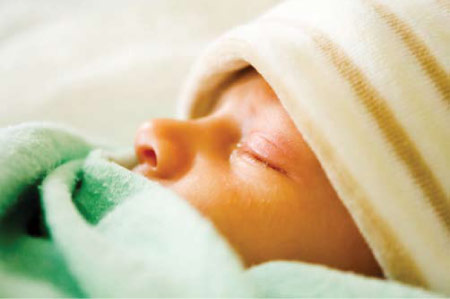Biliary atresia (BA) is a serious disease that occurs worldwide and affects 1 in 8000 to 15000 newborn infants, causing interruption to bile flow that can lead to serious health problems.
The roles of bile
Bile is the liquid produced by the liver to aid digestion and absorption of fats and fatsoluble vitamins in the small intestine. Bile also helps to carry bilirubin from the liver to intestines for excretion.
Normal and healthy bile ducts – inside and outside the liver – allow bile to flow from the liver to the gallbladder for storage, before it is excreted into the intestine to carry out its functions.
However, when a baby has BA, the bile ducts are absent or damaged and blocked. Impaired bile flow leads to liver damage, affecting many vital body functions at the same time. It can be fatal if not treated.
The causes of BA are still unknown, but it is believed to be caused by multiple factors. What is known so far is that BA is not an inherited disease, and it rarely occurs more than once in the same family. It also has nothing to do with medications taken by women during pregnancy.
| Types of BA | |
|
Postnatal BA
|
Foetal BA
|
Signs to watch out
The very first sign of biliary atresia is jaundice (a yellow discolouration of the skin and the whites of the eyes). Other common signs of BA include pale-coloured stools and dark urine. In “postnatal” BA, the infants are usually born at term with an appropriate weight. On the other hand, infants with the “foetal” form of BA are more likely to be underweight. Parents should be aware that jaundice can also occur in many healthy newborns during the first few days of life. This harmless physiological jaundice usually clears within 2 weeks. In BA, however, infants will experience prolonged jaundice and have pale stools.
If BA is suspected, the infant is usually referred to a centre where there are paediatric specialists and paediatric surgeons with experience in diagnosing and treating the condition.
CAUTION!
If your newborn has pale or grey or white stools, or continues to have jaundice for more than 2 weeks, bring him to the doctor to check for a possible liver problem.
Treatment for BA
Biliary atresia is a condition that cannot be treated with medication. The only first-line treatment to improve bile flow and reduce jaundice is a surgical procedure called the Kasai portoenterostomy. Prior to the development of this procedure, death from BA was almost 100%.
Nutritional needs in BA
Nutrition can be a problem in a child with BA. Due to inadequate or absence of bile in the intestine, digestion and absorption of fats and certain vitamins can be significantly hampered. Children with BA also have faster metabolism than healthy children, so they require more calories.
If your child has BA, you can take these steps to ensure that his nutritional needs are not compromised:
- Seek the advice of your paediatrician and dietician.
- Feed him a well-balanced diet.
- Offer him three regular meals a day and light snacks in between meals.
- Supplement his diet with vitamins, eg vitamins A, D, E and K.
- Medium-chain triglyceride (MCT) oil may be added to his foods and drinks to give him more calories and help him grow. Compared to other types of fats, MCT are more easily digested without bile.
|
Kasai procedure
|
Liver transplant
|






Comments